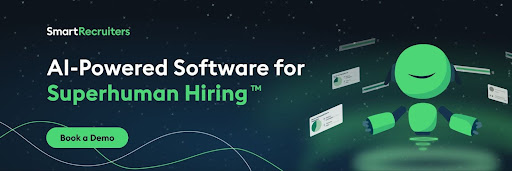Practically recession-proof, the healthcare industry is one of the most consistently growing job sectors. The United States alone added 902,000 healthcare and social assistance jobs in 2024. Such high demand creates many talent challenges for healthcare recruiting teams.
They’re tackling those challenges and experimenting with AI-driven answers that weren’t available just a couple of years ago. AI will grow far more effective and powerful for healthcare recruiters in the months and years to come. The industry should explore the possibilities AI can bring for more efficient and effective recruiting now, as it will provide a competitive recruiting advantage.
“AI is already redefining how work is getting done,” said Cassie Pike, Executive Vice President, Strategic Client Partnerships at Cielo Talent. “Recruiters are doing less busy work and being recruitment consultants to the business, generating data for you so you can spend time cultivating relationships. It’s just going to elevate their jobs.”
This article covers what technology is doing for healthcare recruiters and what this AI-powered future will bring. Read to find out:
- The state of the healthcare job market
- How companies are addressing healthcare recruiting challenges
- Superhuman hiring in healthcare
The state of the healthcare job market
The American Hospital Association sums up the healthcare talent challenge by saying that there will be a shortage of about 100,000 critical healthcare workers by 2028. Mercer said the shortage of nursing assistants will be particularly severe.
It’s a challenging environment for healthcare employers.
Analysis from Recruiting Benchmarks 2025 Report found that there are 40 applicants per healthcare hire, 45% lower than the global average for all industries (73 applicants per hire). Examining 89 million applications for 1.5 million jobs across 95 countries revealed that the offer acceptance rate in healthcare is 12% lower than in other sectors, and the average days to hire (41 days) is 8% longer.
Ryan Affolter, who works on an annual healthcare benchmark report for RogueHire, said that 46% of all nursing positions take five months to fill. And 33% of nursing openings have aged beyond 120 days. “Organizations are still not investing enough time, money, and resources to find, engage, and close top talent for difficult-to-fill critical positions,” he said. Many are “large enterprises using archaic, ERP-driven applicant tracking systems,” he said. These systems lack the intelligence and workflow precision of a dedicated AI-driven hiring solution.
The healthcare sector is expected to continue growing. Data shows that healthcare will be the fastest-growing occupational sector, driven by the needs of aging baby boomers, Michael Wolf, division chief for employment projections at the BLS, told Marketplace.
“There’s an absolute shortage of everything from radtechs to X-ray techs to nurses to physicians,” said Pike.
How companies are addressing healthcare recruiting challenges
Healthcare employers are taking a wide range of steps to address their staffing shortages. Here are some examples.
Giving recruiters more time with humans
Asbury Communities is a not-for-profit senior living center with about 2,800 employees. It opted for a centralized applicant tracking system (ATS) for its 11 locations in four states. This shortened time to hire, reduced manual work, and ensured hiring teams uphold service level agreements for response times.
Asbury recruiters have freed up time to do more value-added tasks. “We finally have time to attend career fairs and build relationships with local organizations that will help grow our talent pipeline,” Helene Perdue, former head of Talent Acquisition and Development, said. If Asbury attends a hiring event, it can get an offer out quickly. “We don’t feel like we’re behind when two recruiters are at an event and have an offer that needs to be sent,” Perdue said. “Someone can cover because it only takes a few minutes, not hours.”
Meeting candidates where they are
“Text message is by far the most effective communication channel for our talent demographic,” said Ben Rynja, the former Head of Talent Acquisition at KinCare, an 1,500-employee Australian home healthcare organization. It implemented SmartMessage, a texting technology that makes it easier to communicate with candidates. Through text messages, recruiters can send messages to candidates about scheduling interviews and answer their questions. The system integrates with background and reference checking tools, and also assists in obtaining proof of documentation. Candidates can receive offer letters and sign them digitally. All of the communication is visible to everyone on the hiring team, reducing delays due to unexpected absences.
Providing better candidate experiences
Lighthouse Research & Advisory recently asked candidates what was most important to them in the hiring process. The top answer was a “fast application process that respects their time,” a response that ranked higher than knowing what the job pays, keeping up with the status of the application, mobile-friendliness, appreciative recruiters, and all other options. Along those lines, KinCare improved and simplified its application process. The time to complete an application dropped from 17 minutes to less than five. Time-to-fill decreased from 40 days to 18, and the overall candidate drop-off rate fell by 60%.
Optimizing job postings
With its prior recruiting software, Asbury was only able to post its jobs on a limited number of job boards. With SmartDistribute, open roles are more widely posted, and hiring teams can now easily see top-performing sources. “SmartRecruiters put our jobs on hundreds of job boards that we didn’t have available to us before,” said Perdue. “We’re able to tell hiring managers it’s not just Indeed anymore.”
KinCare didn’t know if it was missing out on potential hires by ignoring niche and regional job boards, nor could it measure sourcing effectiveness due to a lack of channel attribution data. By setting up custom sources and tracking IDs with SmartRecruiters’ open APIs, KinCare can see which job boards net the most hires. “Our hiring teams love being able to drill down and see where our hires are coming from,” Rynja said, noting that almost 10% of hires now come from niche job boards. The insights on what channels work best allow KinCare to optimize sourcing channels, reallocate budget in real time, and spend more efficiently. “SmartRecruiters source attribution analytics helped build the business case to increase our overall spend,” he said.
Rediscovering talent
Affolter said the industry is behind many others when it comes to technology adoption. He has been advising healthcare organizations to make better use of the “silver medalist” applicants they have in their applicant tracking systems. “You might have hidden gems in your database,” he tells clients. “The vast majority of your external new hires have already applied, expressed interest in your organization, and are in your database. Organizations need to consider shifting investment and resources to high-touch candidate rediscovery/advocacy strategies versus investments in ‘top of the funnel’ strategies designed to find net new applicants.” A candidate relationship management tool (CRM) makes candidate rediscovery much simpler.
Providing more flexibility
Pike, from Cielo, said that some companies insist that 12- or even 16-hour shifts are necessary. She has seen other companies figure out how to avoid them, and even provide four-hour shifts to people who want them. This has greatly improved employees’ experiences and their interest in referring others to the job.
Personalizing experiences at scale
Pike said that Cielo is using AI to draft personalized communications to healthcare prospects. This saves time and produces higher response rates, as people feel like they’re not being spammed. Cielo is also looking into the use of AI to provide managers with weekly updates on open jobs, rather than relying on recruiters to share the latest news on their hiring funnel, which can be time-consuming for recruiters handling dozens of requisitions.
Superhuman hiring in healthcare
Modern, sophisticated, AI-powered tools can help healthcare organizations solve their talent challenges. In fact, they are an imperative.
- When Asbury upgraded its recruiting software to SmartRecruiters’ advanced technology, it reduced time to fill by 33% (46 days to 31 days).
- At KinCare, its employee stay survey showed that the recruitment and onboarding process received a satisfaction rate of more than 90%.
- AI tools like Winston from SmartRecruiters help teams hire 26% faster than those who don’t use AI.
The technology and artificial intelligence that will power talent acquisition systems is improving daily. We have only begun the improvements in efficiency that will be brought to healthcare recruiters this decade. Interview scheduling AI, for example, will take that task almost entirely off recruiters’ plates. AI matching tools will help surface past applicants to healthcare recruiters, showing them what the pipeline looks like for a role before it’s posted. AI agents will know when a pipeline is low and automatically be able to find and add matching candidates to recruiters’ databases.
The upshot of all this new technology is that recruiters will be able to handle more job requisitions, and they will have a greater percentage of their time to spend on human interactions with candidates.
Affolter said that recruiters and TA leaders should start now to “at least be the quarterback to infuse change” in their healthcare organizations. Talent acquisition needs to “take more ownership,” he said. If organizations don’t start learning about how AI can and will be used to hire people, they will fall behind when it comes to the candidate experience and other areas.
This AI “future” is actually arriving very quickly. Click below if you’d like to learn more about how SmartRecruiters’ Leading Talent Acquisition Software can help healthcare organizations.






